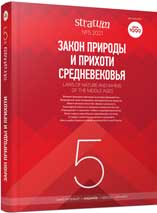Погребения с целыми скелетами коней в Затисье и степях Восточной Европы VI—VII вв. н. э.
Burials with Whole Horse Skeletons in the Tiszántúl and Eastern European Steppe Region in the 6th—7th centuries AD
Author(s): Bence Gulyás, Gábor Lőrinczy, Anton A. StrokovSubject(s): History, Archaeology, Middle Ages, 6th to 12th Centuries
Published by: Издательский дом Stratum, Университет «Высшая антропологическая школа»
Keywords: Tiszántúl; Azov sea; early Middle Ages; early Avar age; funerary rite; animal sacrifices;
Summary/Abstract: After 567, a certain nomad group of Eastern European origin arrived to the Carpathian Basin with the Avars and occupied the territory east to the Tisa River. This population differs from the Inner Asian Avars by their burial customs whose best analogies can be found among the contemporary nomads of the steppe region of Eastern Europe, called Sivashovka group. The main aim of this article is a special rite of the two regions: burials with whole horse skeletons. This element of the burial rite was treated as a foreign influence — Avaric or Turkic. This study proves that this element was well embedded in the structures of the funerary rite in both regions. Additionally, there are similarities, which show that both populations get acquainted with this custom at the same time. We can state that the difference between the burials with horse hides and the burials with whole skeletons is based on social, rather than ethnic grounds.
Journal: Stratum plus. Археология и культурная антропология
- Issue Year: 2021
- Issue No: 5
- Page Range: 281-293
- Page Count: 13
- Language: Russian
- Content File-PDF

